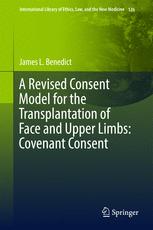

Most ebook files are in PDF format, so you can easily read them using various software such as Foxit Reader or directly on the Google Chrome browser.
Some ebook files are released by publishers in other formats such as .awz, .mobi, .epub, .fb2, etc. You may need to install specific software to read these formats on mobile/PC, such as Calibre.
Please read the tutorial at this link: https://ebookbell.com/faq
We offer FREE conversion to the popular formats you request; however, this may take some time. Therefore, right after payment, please email us, and we will try to provide the service as quickly as possible.
For some exceptional file formats or broken links (if any), please refrain from opening any disputes. Instead, email us first, and we will try to assist within a maximum of 6 hours.
EbookBell Team

4.0
86 reviewsThis book supports the emerging field of vascularized composite allotransplantation (VCA) for face and upper-limb transplants by providing a revised, ethically appropriate consent model which takes into account what is actually required of facial and upper extremity transplant recipients. In place of consent as permission-giving, waiver, or autonomous authorization (the standard approaches), this book imagines consent as an ongoing mutual commitment, i.e. as covenant consent. The covenant consent model highlights the need for a durable personal relationship between the patient/subject and the care provider/researcher. Such a relationship is crucial given the recovery period of 5 years or more for VCA recipients. The case for covenant consent is made by first examining the field of vascularized composite allotransplantation, the history and present understandings of consent in health care, and the history and use of the covenant concept from its origins through its applications to health care ethics today. This book explains how standard approaches to consent are inadequate in light of the particular features of facial and upper limb transplantation. In contrast, use of the covenant concept creates a consent model that is more appropriate ethically for these very complex surgeries and long-term recoveries.